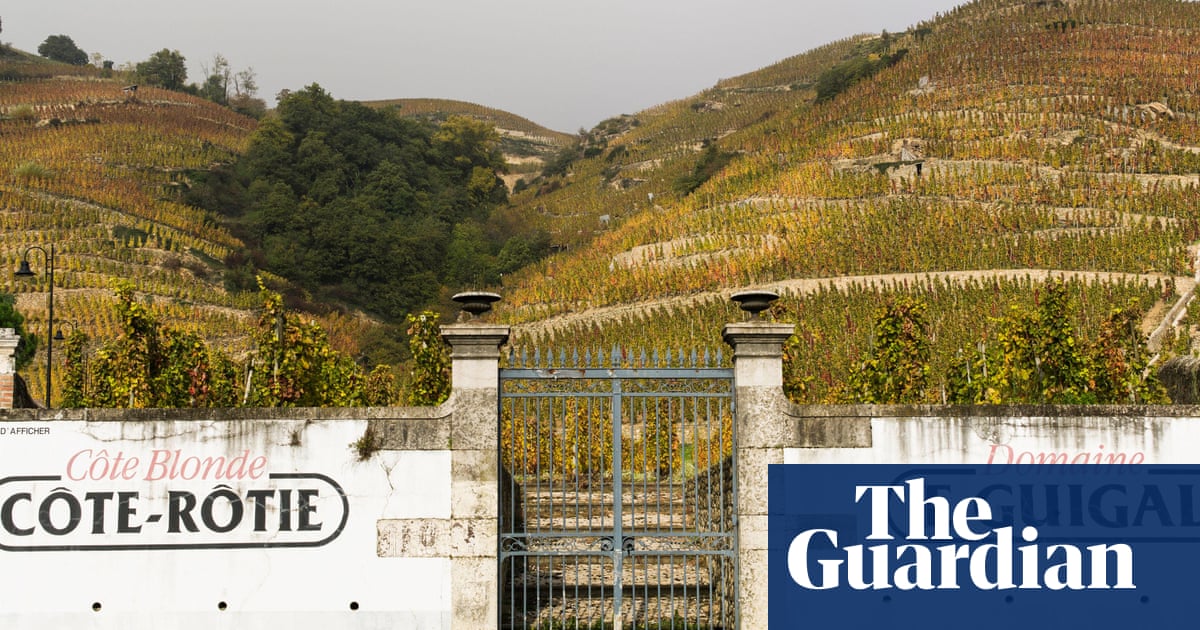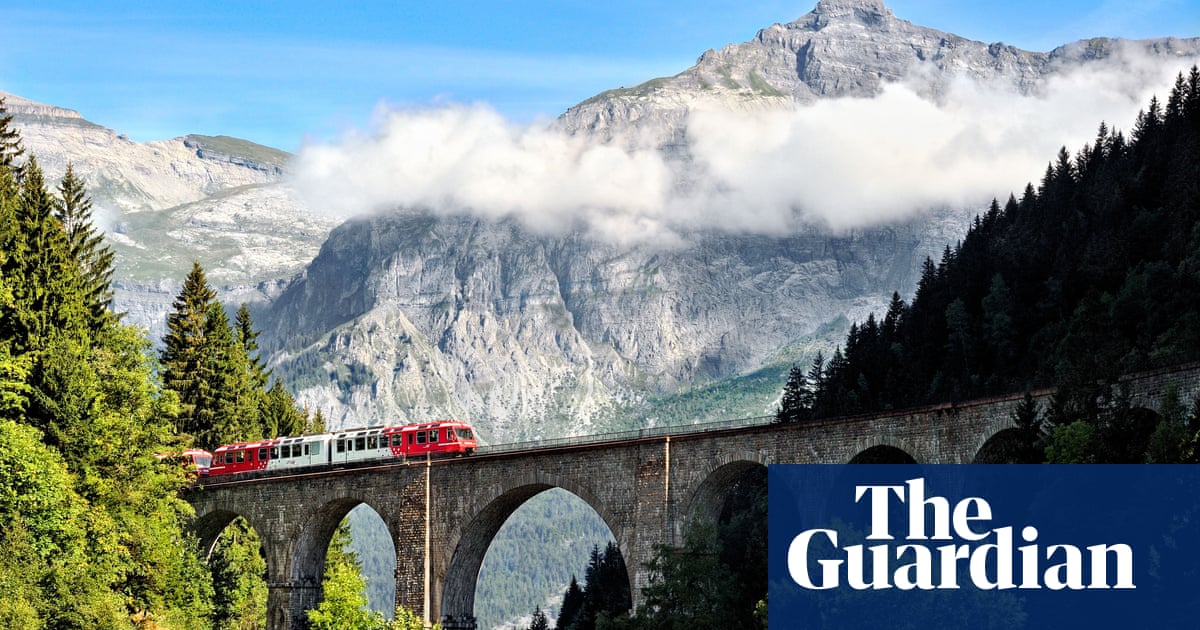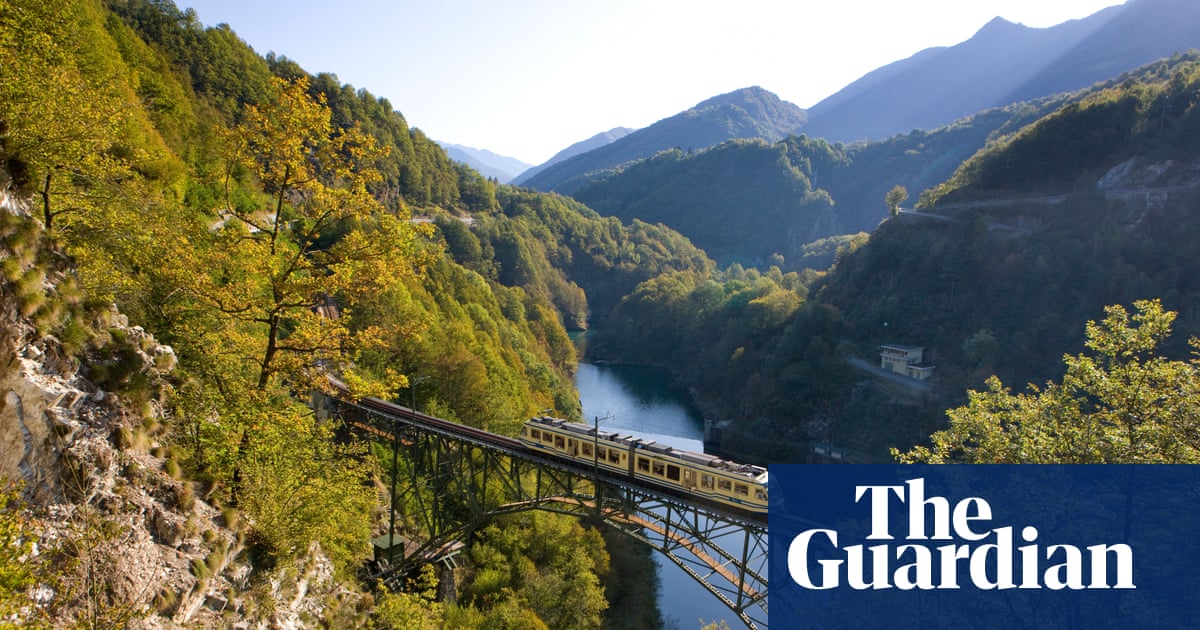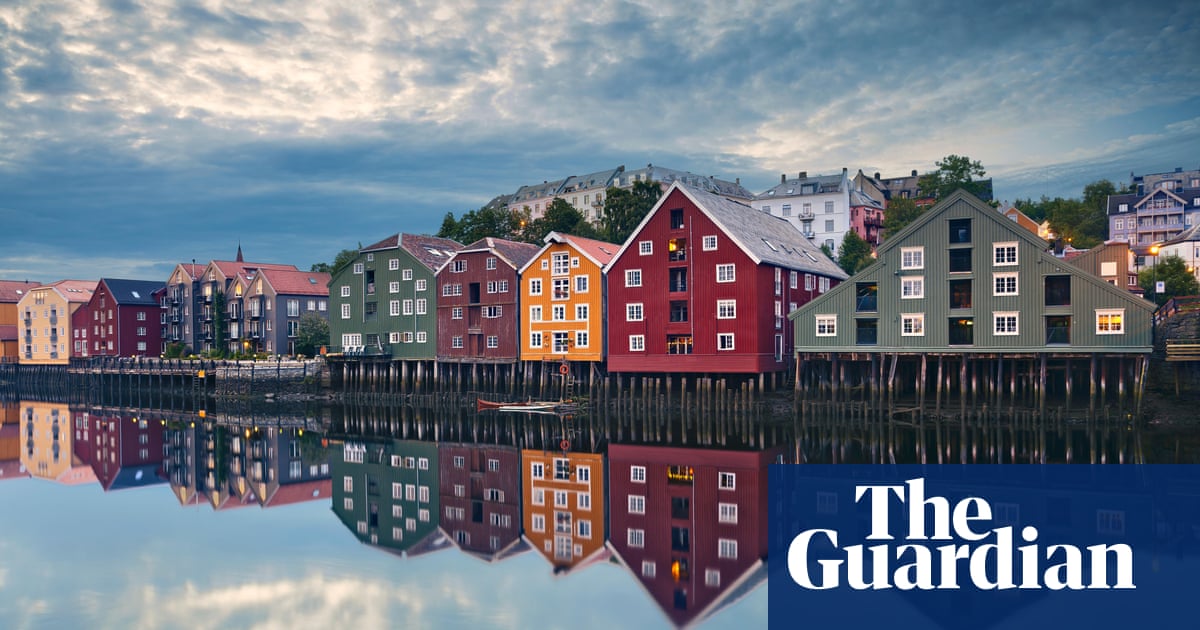
By the time you reach Aarhus on the train from the south, there is a sense of having penetrated deep into Jylland, the long Danish peninsula whose name is often rendered as “Jutland” on English and German maps. At Fredericia, a one-time garrison town on the east coast, the overhead wires give out. North of here it is diesel traction only on a railway that links the heads of several long sea inlets on the ride up to Aarhus.
The railway station at Aarhus, four-and-a-half hours from Hamburg on the occasional direct train, is a handsome terminus and, for many travellers, the northern extent of their Jutland journey. But some trains reverse in Aarhus, looping around the west side of the city, and then meander north. There’s a lot of Jutland still to come, and the 160-mile journey from Aarhus up to Denmark’s northernmost railway outpost at Skagen is a scenic delight. It offers not grandeur, but a pleasing mix of forest and heathland, agricultural and coastal landscapes. This is a journey to the very end of Denmark. Skagen itself is an extraordinary community, perched on a fragment of land poking into the sea where the waters of the Skagerrak and Kattegat straits mingle.
This autumn marks the 160th anniversary of the opening of the first railway station in Aarhus. The current building is more recent, a gracious neo-Renaissance structure dating from the late 1920s. When I stopped in Aarhus in September, a huge Ukrainian flag was fluttering above the station clock.
North to Aalborg
I take a seat on the almost empty two-carriage train from Aarhus to Aalborg, where passengers bound for stations further north change for the onward journey to Skagen.
Escaping from the tangle of the Aarhus suburbs, we make an unscheduled – and unexplained – stop at Hinnerup, with its striking modernist library and cultural centre by the station. Then it’s on through the gentle Lilleå Valley, past woodlands where eager mushroom-gatherers are combing the forest floor. We slip by stone churches with white towers, red barns in a variety of styles, and solid Jutland farmhouses that settle gently into the rolling landscape. Jutland is more hilly than many visitors expect.
The arrival of the railway 150 years ago transformed this rural region. The small town of Hesselholt even marked the moment by changing its name to Arden. With an idyllic location on the edge of thean ancient forest of Rold Skov, Arden is a perfect spot for a walk on heathery hills where eagle-eyed visitors are often rewarded by sightings of red deer.
In Aalborg, I change from the silver-hued Danish State Railways train to two-tone blue carriages of a localoperator. We rattle north over the girder bridge that carries the railway across Limfjord to reach North Jutland. This northernmost part of Denmark is, in effect, an island, a status it gained in a storm 200 years ago when the sandy barrier that linked North Jutland to the mainland was breached in a ferocious storm.
Forests, dunes and coast
The North Jutland scenery is initially tame, but the best is yet to come. The sun appears, so I make an impromptu stop at Tolne, keen for another woodland walk. The beechwoods here turn out to be remarkably beautiful. A brisk walk is good prep for coffee and orange cake at an old country inn by the station. IHere potters Janne Hieck and Gregory Hamilton Miller have made their home.
“It was curiosity that brought me here 10 years ago,” says Miller. “I was on the train to Skagen and saw this tumbledown place when the train stopped at Tolne. I bought it on a whim.” Today the couple manage a pottery studio, cafe and B&B in the once-abandoned inn.
Back on the train, we follow the tiny Elling River towards the coast at Frederikshavn, where I pause to watch the ferry leaving for nearby Læsø, an island famed for its salt and radishes which somehow I’ve never managed to visit. Next time, perhaps.
The final part of the journey, from Frederikshavn to Skagen, is a wonderful ride into an eerie landscape of shifting sand dunes. Neat conifer plantations give way to arid scrubland, while away to the east there are glimpses of ships at anchor in sheltered Ålbæk Bay, a part of the Kattegat that separates North Jutland from Sweden.
I stop yet again at Hulsig, a wee slip of a village amid a sea of hummocky dunes. Then it’s back on the train for the last 10 minutes to Skagen, a community full of breezy, seaside style which, in the closing decades of the 19th century, found fame as an art colony.
If you are ever in any doubt about the importance of geography, come to Skagen, a place that, against all odds, survives amid the sand almost at Denmark’s northernmost extremity. I had a romantic notion of stepping off the train to see the waters of the Skagerrak and Kattegat doing battle outside the station. But the actual tip of the spit is at Grenen, so I rent a bike and pedal out to the windswept spot which is, in effect, the place where the North Sea meets the Baltic. The two seas do indeed look rather different, the North Sea choppy and turbulent, the Baltic calmer and perhaps, just perhaps, a lighter shade of blue.
How to get there
Half-hourly trains operated by Danish State Railways (DSB) link Aarhus with Aalborg, normally taking 75-90 minutes. The onward hourly service from Aalborg to Skagen is run by North Jutland Railway (NJ). That second part of the journey takes two hours. Through tickets from Aarhus to Skagen are available from DSB. The regular standard-class fare is £38, but book well in advance and you’ll find discounted tickets for as little as £12.50. These cheaper DSB Orange fares are tied to a specific train and don’t allow stopovers. For real flexibility, consider using an Interrail pass, which is valid without restriction on all train services in Denmark.
The inn at Tolne offers simple, homely accommodation, with doubles B&B from about £113. It is just a step away from the forest and there’s good, local fare in the cafe. At Skagen Hotel, opposite the railway station in Skagen, doubles B&B cost from £114 in low season, but £186 or more on summer weekends.












